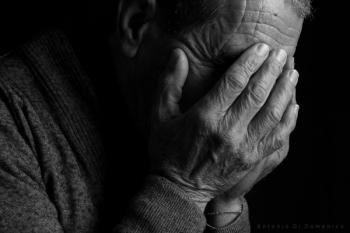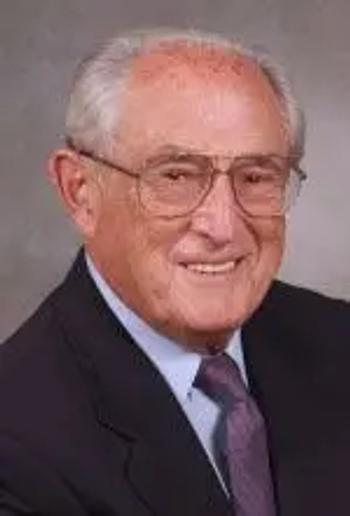
- Psychiatric Times Vol 29 No 8
- Volume 29
- Issue 8
Anesthesia Advances Add to Patient Comfort in ECT
Here we discuss how advancements in anesthesia techniques and ECT procedures make ECT more comfortable and tolerable for patients.
Electroconvulsive therapy (ECT) has been a safe and effective treatment for severe depression and other psychiatric illnesses since its introduction into clinical practice in 1938.
In a previous column (
Over the past 75 years, a large number of patients have been treated successfully with ECT, but until recently, many who received ECT could expect post-treatment nausea or headache.2 Although these unpleasant effects are generally mild, for some the nausea and headache can be severe enough to cause them to avoid needed treatment. Now, even these previously common aftereffects can be prevented with medications originally developed to prevent postoperative pain and nausea. In addition to these specific anesthesia interventions, other periprocedural advancements, including liberalization of concomitant and pre-treatment medications, add to the comfort and tolerability of ECT.
Headache
Headache is the most commonly reported complaint after ECT; it may occur in about half of patients. It is typically mild and transient and usually responds to simple, over-the-counter analgesics, such as acetaminophen and ibuprofen. In some patients, however, it may be more severe, making prophylactic intervention with an intravenous agent, such as ketorolac, appropriate.
Post-ECT headache develops immediately or shortly after the patient regains consciousness following ECT.3 The headache may be associated occasionally with nausea and rarely with photophobia. It is usually bilateral and constant but may be unilateral or pulsatile.
The NSAID ketorolac can be given intravenously.4 Ketorolac is indicated for the short-term management of moderately severe acute pain that requires analgesia at the opioid lev-el, and it is frequently given to patients after they have had surgery. Although the pain-relieving properties of ketorolac are similar to those of morphine, the drug does not cause respiratory depression or cloud the sensorium.
Because ketorolac is an NSAID, it is contraindicated in anyone with sensitivity to this class of drugs or with a bleeding tendency. Because it can be administered intravenously, ketorolac can be given immediately before treatment and is very effective in significantly reducing the incidence of post-ECT headache. Generally, no prophylactic analgesic is given before the first treatment; rather, if the patient awakens with headache, he or she is offered ibuprofen or acetaminophen by mouth. If the headache turns out to be of moder-ate or severe intensity, the patient is offered prophylaxis with intravenous ketorolac at subsequent ECT sessions.
For patients with a history of migraine or other, more severe headache, the likelihood that they will experience a post-treatment headache is higher than in patients who do not have this history. For those patients, treatment of post-ECT headache may require antimigraine medications.5
Nausea
Nausea following ECT is less common than headache but still occurs in up to 25% of patients. Nausea may be related to the anesthetic, to the ECT treatment itself, or to air in the stomach from assisted ventilation. It may occur in conjunction with, or independently from, headache. Post-ECT nausea can prevent otherwise well patients from leaving the treatment recovery area in a timely manner and going about the rest of their day.
When nausea occurs without headache, the primary treatment is with the serotonin 5-HT3 receptor antagonist ondansetron. Since the untoward effects of prophylaxis with this medication are few, most patients at increased risk for post-ECT nausea are given ondansetron intravenously before treatment. Older antinausea medications such as the dopamine-blocking agents, including phenothiazine derivatives (eg, prochlorperazine), butyrophenones (haloperidol, droperidol), trimethabenzamide, and metoclopramide, are associated with more adverse effects (eg, sedation). These older antinausea medications are reserved for the extremely rare case in which ondansetron is not effective.
If nausea cannot be prevented by routine prophylaxis with ondansetron, switching the anesthetic agent may also be considered. For some patients with severe post-ECT nausea, propofol may be the preferred choice of anesthetic agent because it has intrinsic antiemetic properties.
Muscle aches
Diffuse myalgias are most commonly reported after the first ECT session; they then subside or complete-ly disappear following subsequent treatments.3,6 They are likely caused by muscle fasciculations from the muscle relaxant agent, succinylcholine, used in ECT. Similar to what happens after an intense workout at the gym, patients may feel sore for a day or two after receiving the drug.
The incidence of myalgias after use of succinylcholine can approach 90%. Usually, the myalgias respond well to the same simple analgesics that are used for mild headache. If myalgias persist after subsequent ECT sessions, other interventions, including prophylactic intravenous ketorolac or pretreatment with a small dose of a nondepolarizing muscle relaxant (to block the fasciculations), may be considered.
Dry mouth
In years past, an intramuscular injection of an anticholinergic agent was given at least 30 minutes before ECT; this often resulted in significantly unpleasant adverse effects, such as dry mouth and rapid heartbeat. Today, glycopyrrolate is typically administered intravenously immediately before ECT.2 Given in this fashion, glycopyrrolate safely prevents bradycardia without causing the unpleasant pre-ECT dry mouth.
Pre-ECT anxiety
Many patients are understandably anxious before an ECT session. For the vast majority, once they have had their first treatment, this anxiety subsides. For a small minority of patients, ongoing anxiety may be a problem that jeopardizes their ability to complete a course of ECT. In addition, many patients experience anxiety symptoms as part of their depressive episode and wish to continue taking benzodiazepines, at least in the beginning of their ECT course.
In the past, the amount of benzodiazepine antianxiety medication allowed during a course of ECT was strictly limited and was completely prohibited the morning before a session. Currently, the practice is much more liberal-we now recognize that low to moderate doses of benzodiazepines are very unlikely to interfere with a course of ECT.7 A common practice is to switch from a medication with a long half-life (eg, clonazepam) to one with a shorter half-life (eg, lorazepam), with the expectation that a bedtime dose will have been more fully cleared from the bloodstream by the time of ECT the next morning and, thus, will interfere minimally with seizure induction and propagation. For extremely anxious patients, a low dose of a benzodiazepine can be taken the morning of an ECT session-a patient can take 0.5 or 1 mg of lorazepam by mouth with a small sip of water, or the drug can be dissolved sublin-gually, an hour or so before the ECT procedure.
Medication withdrawal syndromes
Almost all patients being considered for a course of ECT are receiving one or more psychotropic medications. Clearly, most of these drugs will have been either completely ineffective or only partially effective-hence the need to consider ECT. In the past, standard practice was to discontinue all psychotropic medications before starting ECT. This often necessitated a delay in starting ECT and sometimes led to the discomfort of withdrawal syndromes. With the recognition that many modern antidepressant medications are safe in conjunction with ECT, it is now common practice to continue medications that are well tolerated and may have been partially helpful. It is also becoming more common to initiate treatment with new antidepressant agents concurrently with a course of ECT, with the expectation of added antidepressant efficacy and a possible reduction in risk of relapse when ECT is terminated.8
Conclusions
Contemporary anesthesia practices and ECT procedures have evolved to make ECT both safe and comfortable for patients. Unfortunately, because of lingering stigma and a low level of familiarity with ECT among many health care providers, ECT continues to be prescribed less frequently than warranted. For severely depressed patients, it remains a vital treatment option.
As practitioners, it is our responsibility to ensure that ECT is prescribed when indicated and practiced to a high standard of care, with patient safety and comfort as foremost goals. As the idealized McLean Hospital psychiatrist, Dr Nolan, said to calm her apprehensive patient, Esther Greenwood, in The Bell Jar, “If it’s done properly, it’s like going to sleep.”9
References:
References
1. Kellner CH, Bryson EO. Anesthesia advances add to safety of ECT. Psychiatr Times. 2012;29(1):12-15.
2. American Psychiatric Association Task Force on Electroconvulsive Therapy. The Practice of Electroconvulsive Therapy: Recommendations for Treatment, Training, and Privileging. Washington, DC: American Psychiatric Association; 2001.
3. Dinwiddie SH, Huo D, Gottlieb O. The course of myalgia and headache after electroconvulsive therapy. J ECT. 2010;26:116-120.
4. Gillis JC, Brogden RN. Ketorolac. A reappraisal of its pharmacodynamic and pharmacokinetic properties and therapeutic use in pain management. Drugs. 1997;53:139-188.
5. Markowitz JS, Kellner CH, DeVane CL, et al. Intranasal sumatriptan in post-ECT headache: results of an open-label trial. J ECT. 2001;17:280-283.
6. Rasmussen KG, Petersen KN, Sticka JL, et al. Correlates of myalgia in electroconvulsive therapy. J ECT. 2008;24:84-87.
7. Boylan LS, Haskett RF, Mulsant BH, et al. Determinants of seizure threshold in ECT: benzodiazepine use, anesthetic dosage, and other factors. J ECT. 2000;16:3-18.
8. Sackeim HA, Dillingham EM, Prudic J, et al. Effect of concomitant pharmacotherapy on electroconvulsive therapy outcomes: short-term efficacy and adverse effects. Arch Gen Psychiatry. 2009;66:729-737.
9. Plath S. The Bell Jar. New York: Harper & Row; 1971.
Articles in this issue
over 13 years ago
Antidepressants and Persistent Pulmonary Hypertension of the Newbornover 13 years ago
Initiatives in Integrative Mental Healthover 13 years ago
On the Essence of Psychotherapyover 13 years ago
Effective Personalized Strategies for Treating Bipolar Disorderover 13 years ago
After the Partyover 13 years ago
Antidepressants: Risk vs Benefit in Depressionover 13 years ago
The Occupation of Psychiatry?over 13 years ago
Electronic Health Records and Patient Privacy-An Oxymoron?over 13 years ago
Introduction: Dementia, Delirium, Depression, Drugs, and DrivingNewsletter
Receive trusted psychiatric news, expert analysis, and clinical insights — subscribe today to support your practice and your patients.













